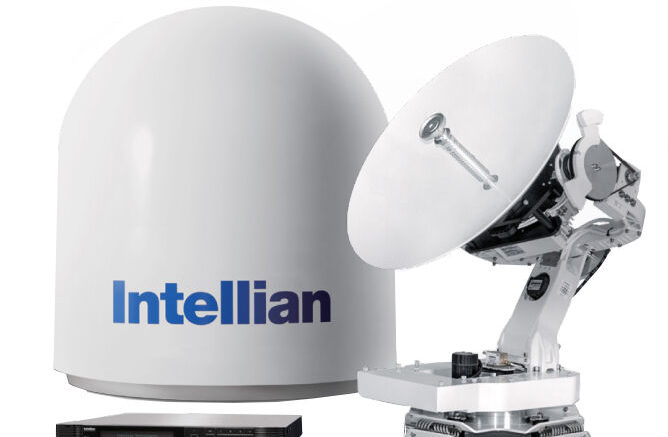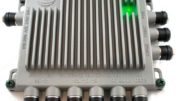I am constantly amazed that satellite TV for boats actually works. You would think it impossible to point at a satellite 22,000 miles away while you’re constantly moving in three dimensions. But nevertheless, it does work. It works spectacularly well. In fact, I recommend that everyone with a mid-size or larger boat get some sort of satellite dish. And of course, I recommend that you get yours from Signal Connect, the commercial arm of Solid Signal.
But enough with the promotion.
The real question is how big a satellite dome can be, and there are two answers. Let’s not waste any more time getting to them.
ANSWER ONE: It depends
This is really the most relevant answer. It depends on what you’re trying to use that satellite dish for. Back in the ’00s, satellite on a boat only meant one thing: television. And, if you’re looking for a dish to get TV signals, the largest one is going to be in the neighborhood of 1 meter to 1.2 meters. It depends on which satellite TV service you want to pick up. There’s a more or less generic dish that will pick up most world broadcasts and it’s 1.2 meters in diameter. The largest one for US DIRECTV is 1 meter.
The 1.2 meter dish is designed to pick up broadcasts in the “C” Band as well as the “Ku” band. These are designations of different frequencies. Because you need a bigger antenna for lower frequencies, you need a bigger dish to get “C” band broadcasts (4 -8 GHz) than you do for the “Ku” band (12 – 18 GHz.) So it’s not like DIRECTV users are getting the short end of the stick. It’s just that you really don’t need a larger antenna to get DIRECTV service. Not larger than about one meter anyway.
Satellite dishes for internet can be even bigger. People today expect internet service to be fast, and the key to fast internet is a strong, clear signal in both directions. This means a big antenna, as big as you can get. That’s why satellite dishes for internet (called VSAT dishes) can be as big as 2.4 meters. These bigger dishes allow for more data to pass cleanly between the boat and the satellite.
ANSWER TWO: How big’s your boat?
You need a pretty big boat to accommodate a really large antenna. Typically you will want to put that satellite dish up as high as possible, and that means a big, meaty mast to mount it on. Putting such a mast on a very small vessel would affect its center of gravity. This would give the boat a very unfortunate tendency to tip over easily. And let’s be honest, that’s not something you want. It’s not worth it to get great reception if the whole thing is going to make you tip over, right?
Why aren’t dishes even bigger?
Yeah, we can all giggle about it — size matters. A bigger satellite dish will let you get great signal further offshore. But that sorts of begs the question about why you can’t just put up a five meter dish or a ten meter dish. I mean, assuming your boat is big enough to handle it.
At some point it doesn’t matter how big your dish is. A bigger dish will pick up progressively weaker signals, but at some point the signal will be so weak you can’t get it at all. And, remember too that we’re on a big spherical planet. At some point the satellite will actually be hidden by the earth itself. This happens long before you would get any real benefit from a dish larger than about two meters.
And, as I said before, you need a big boat to handle a big dish. And there just aren’t that many of them out there. That makes the cost of developing such a dish really high on a per-unit basis. No one is going to pay $750,000 for a satellite dish or more. And that’s always a consideration.
Get the right satellite system for your boat
Plain and simple, no one activates more marine satellite systems than Signal Connect. Why would you go anywhere else? We have a team of installers that works at marinas all over the country and we can make sure you get exactly what you need. Support after the sale? That’s where we shine. If you don’t believe it call the experts at Signal Connect. The number is 888-233-7563. If it’s after East Coast business hours, fill out the form below and we’ll get back to you, usually within 24 hours.





